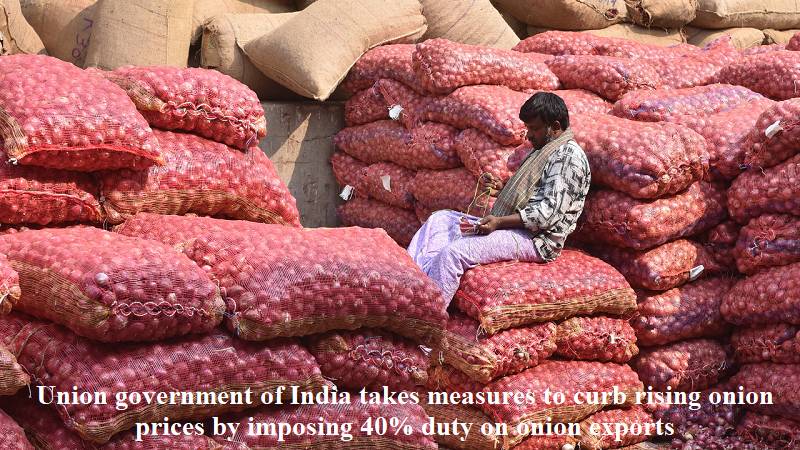
The Indian Union government has implemented measures to address the escalating onion prices in the local market by introducing a 40 percent duty on onion exports until December 31. This step has been officially confirmed through a government notification reported by the news agency PTI.
The government notification explicitly declares, “Government imposes 40 percent duty on onion exports till December 31,” thereby underscoring the temporary nature of this export duty.
The decision to raise the export duty is in response to concerns over a potential surge in onion prices in September. To tackle this issue, the government recently announced the immediate release of onions from its buffer stock in specific regions. The intention was to stabilize prices until the new crop arrives in October.
The government has been actively exploring diverse distribution channels for onions, including e-auctions, e-commerce platforms, and collaborations with state authorities. These collaborations seek to provide onion discounts through retail outlets operated by consumer cooperatives and corporations.
At present, the government holds a substantial stockpile of 300,000 metric tonnes of onions within the Price Stabilization Fund (PSF) to manage any unforeseen price spikes during periods of low supply.
Official data from the government indicates a slight increase in onion costs. As of August 10, the all-India retail price of this essential kitchen staple stood at Rs 27.90 ($0.34) per kilogram. This marks a rise of just over Rs 2 per kilogram compared to the same period the previous year.
To effectively handle onion prices, the National Cooperative Consumers’ Federation of India (NCCF) and the National Agricultural Cooperative Marketing Federation of India (NAFED) had earlier procured 150,000 metric tonnes of onions each from Maharashtra and Madhya Pradesh.
Additionally, the government has initiated a joint pilot project with the Bhabha Atomic Research Centre (BARC) to irradiate onions, thereby extending their shelf life.
The annual onion buffer has seen a significant expansion, growing from 100,000 metric tonnes in 2020-21 to 300,000 metric tonnes in 2023-24. This expansion is attributed to the procurement of Rabi (winter crops) season onions, which are distributed in high consumption areas during periods of low supply.
A statement from the Ministry of Consumer Affairs underscores the essential role of the onion buffer in ensuring consumer access to affordable onions while maintaining price stability.
Typically, India receives nearly 65 percent of its onion supply from the Rabi season, harvested from April to June. These onions fulfill consumer demand until the Kharif crop (harvested at the end of the monsoon season) becomes available in October-November.
In summary, the government’s implementation of an export duty on onions reflects its dedication to stabilizing domestic prices, enhancing distribution mechanisms, and managing the effects of seasonal fluctuations on onion availability and affordability.

Post Your Comments